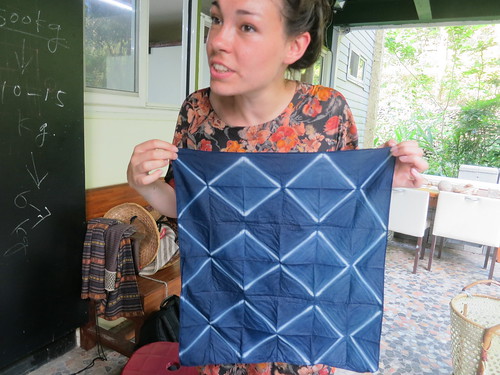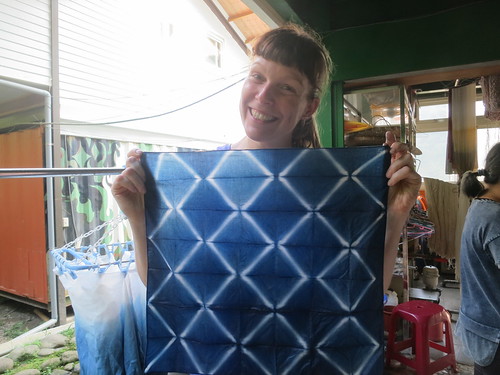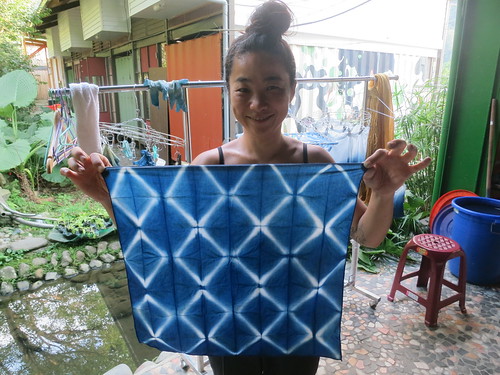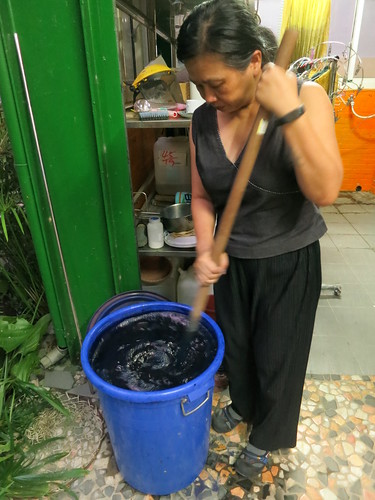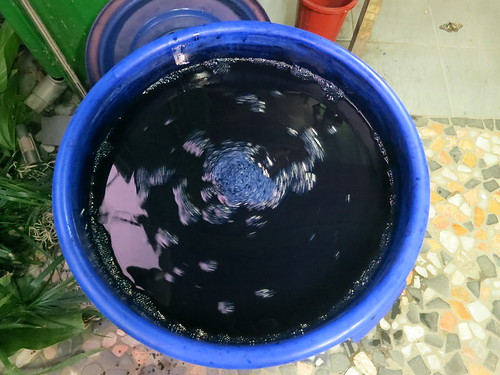蓝染絲 indigo shiboro tie dye on silk shirt made at e-textile summer camp 2017, France.
Industrial tie dye using shiboro method - demonstrated by french specialist who learnt it from Japanese traditional craftsmen - I made at e-textile summer camp 2017. France
Ready to wear qipao from Friendship store, arts and crafts - in Beijing 1984
Indigo tie dye - worn 2018
vintage chinese qipao, industrial print
===
http://etextile-summercamp.org/2017/summercamp/indigo-dye-workshop/
Indigo Dye Workshop
Indigo Dye Workshop
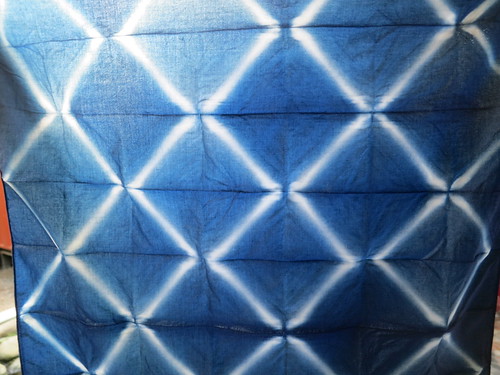 Teacher: Meichi
Teacher: Meichi
Location: Li-han Studio
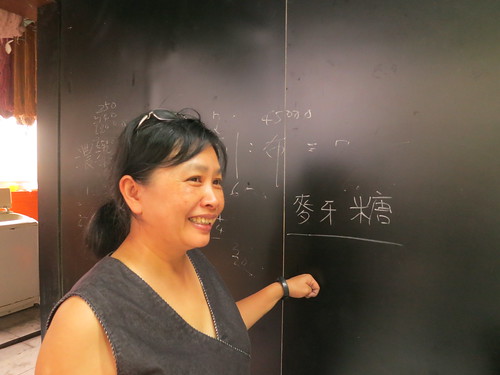
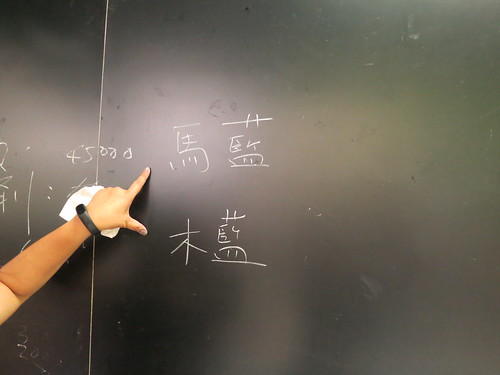
In Taiwan, there are few kinds of Indigo used for dyeing. There are 馬藍 (ma-ai) and 木藍 (ki-ai) as most common kinds. 翡藍 is used in Korea and Japan, and it has greenish blue than 馬藍. Meichi is growing 馬藍 (ma-ai) and she makes her own indigo paste out of it. We used 馬藍 (ma-ai) bath from her in this workshop.
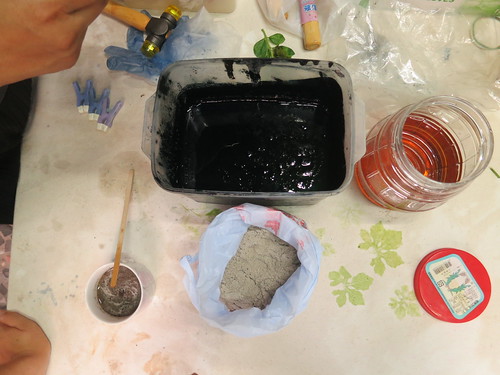
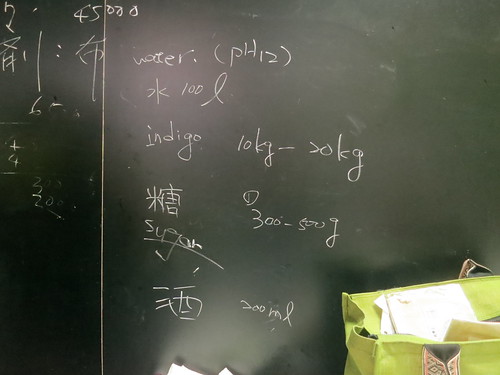
This is what she uses to make her indigo bath. Indigo leaves soaking in water for 30 hours. Then take out the water and your indigo paste is ready. For 10-20 kg of indigo paste, she adds 100 L water, 300-500 g sugar (syrup or honey, this is to feed the fermentation process for the indigo) and 200 ml of sake (rice wine, liquor). Depending on the color you can add more sugar (200 gr.). She then adds Supernatant of ash water (from coles, black wood, or NaOH = chemical version of ashes) to keep the bath in high pH. The bath should be pH12 and she adjusts this by adding ash water or sake. Mix this pot every day for 5 minutes for the next 3 to 7 days. Then your indigo vat is ready.

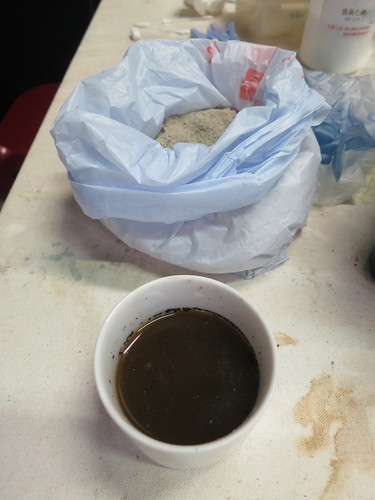
Indigo paste and the ash water
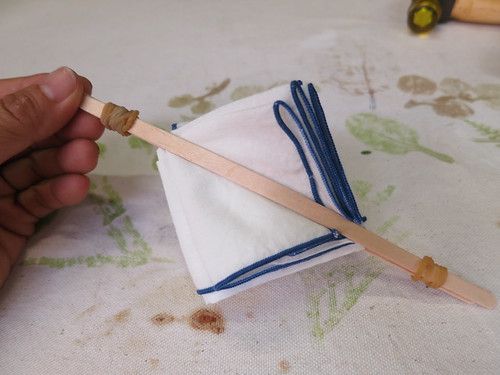

Fold the fabric (cotton, linen, natural fiber fabric) into a square piece and bind it with wooden stick and thread or rubber band. Dip it into Indigo bath for 3 min. Open up each fold in the bath so the indigo liquid goes into the details of the fabric folds.
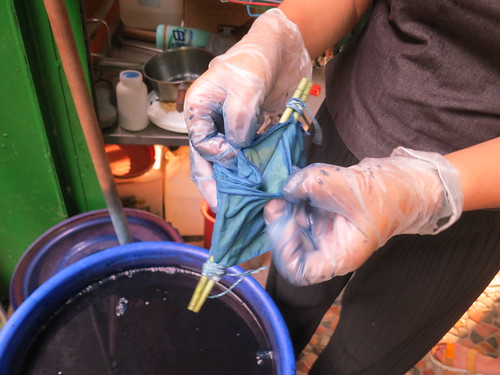
After the 3 minutes, take out the fabric from Indigo bath and open every fold to air them. When the indigo dye is exposed to air (oxygen) it turns its color from yellow to blue.
Repeat this process for 5 times. In professional dying, they will repeat this for 15 times.
Here is another version of indigo making: https://thekindcraft.com/the-process-indigo-from-plant-to-paste/
 Next time!
Next time!









